Junoon in Lahore; Data Ganj Bakhsh and Chehlum
Abul Hassan Ali Ibn Usman al-Jullabi al-Hajveri al-Ghaznawi, better known as Data Ganj Bakhsh, or simply Data Sahib, was a Sufi saint from Afghanistan whose teachings greatly influenced Muslims in South Asia. He was born in 990 AD near Ghazni, Afghanistan, a city that features prominently in the medieval history of the subcontinent. His teachings about Islam, particularly his perceived balance between Sufi mysticism (an personal, interpretive understanding of Allah) and the Sharia (the broad legal strictures of the Qur’an) won him many devotees across the region. When he died in Lahore in 1072 he was buried in what was to become Data Darbar, a major pilgrimage site for Muslims from Pakistan and beyond.
Sunday 20th November 2016, the 19th day of the Islamic month of Safar, was the anniversary of his passing (known as urs), and his shrine became even more a hub of devotion, mourning and celebration. I visited on one night, and entered the shrine amid tight security.
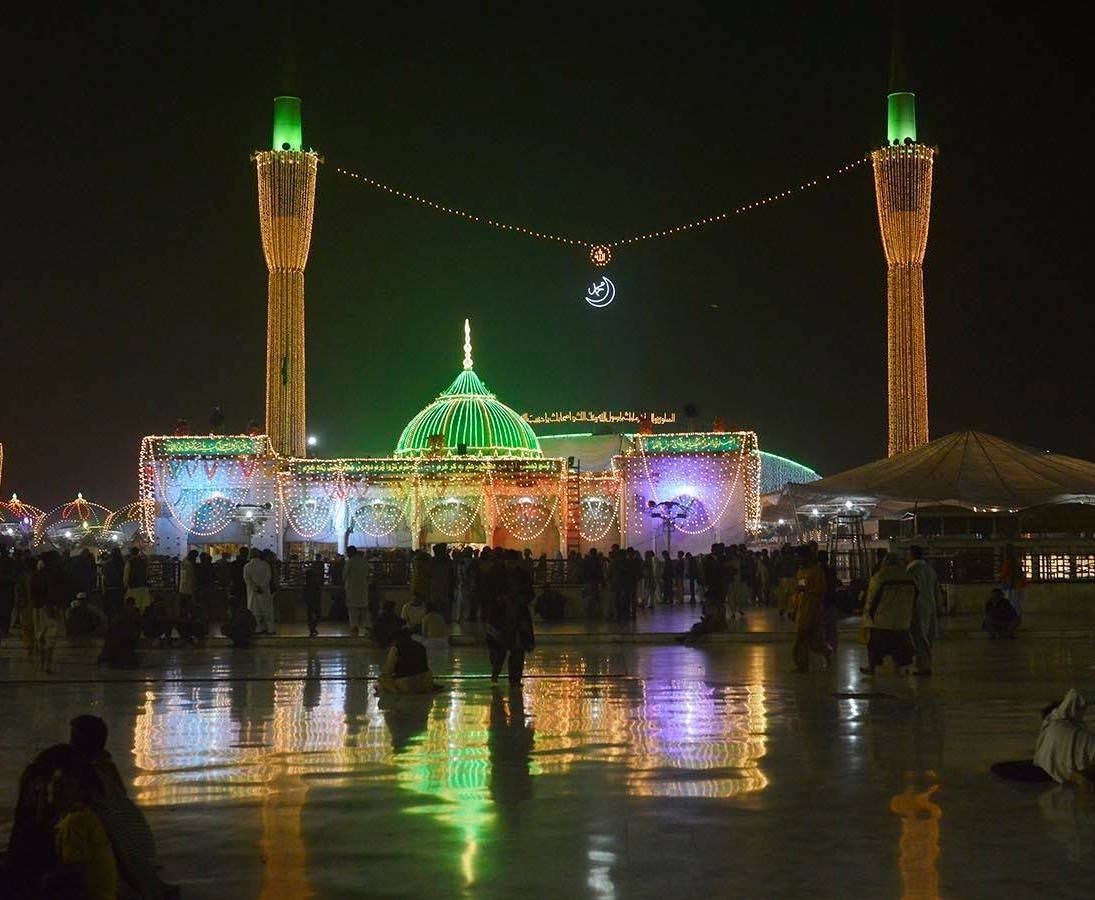
The shrine was alive with heaving crowds, some paying their respects silently, some spending time with their friends and families in the presence of the saint, and many prostrated in prayer. Outside, more than a few were in a state of “dhamaal” – dancing and spinning around to the beat of the dhol (drums) in joyful spiritual bliss. Those who could get close to the actual tomb were lucky to touch it amid the jostling throngs; an even luckier few got close enough to kiss it.
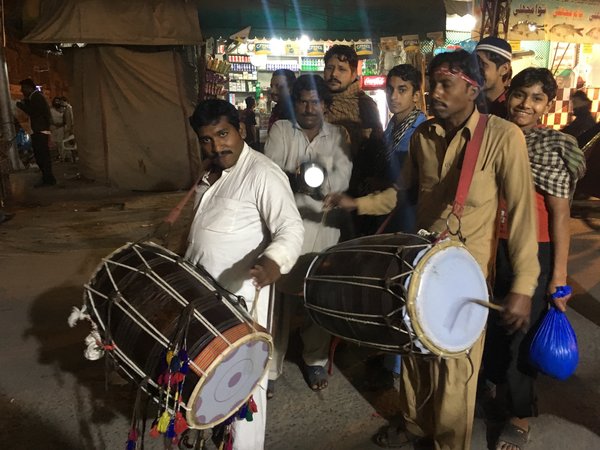
Dhol players for Data Ganj Bakhsh in the streets of Lahore
Around the shrine small groups were set up to serve sabeel, the free milk ritually served to those who come to pay their respects. Such is the importance of sabeel that Lahore and its surrounding districts are known to face a dairy shortage in the days around Data Sahib’s urs. The streets leading towards the shrine were filled with not only drummers and devotees dancing dhamaal, but horse carts filled with farmers, their families and drums of milk, all ready to be donated to the public in return for the saint’s blessings.
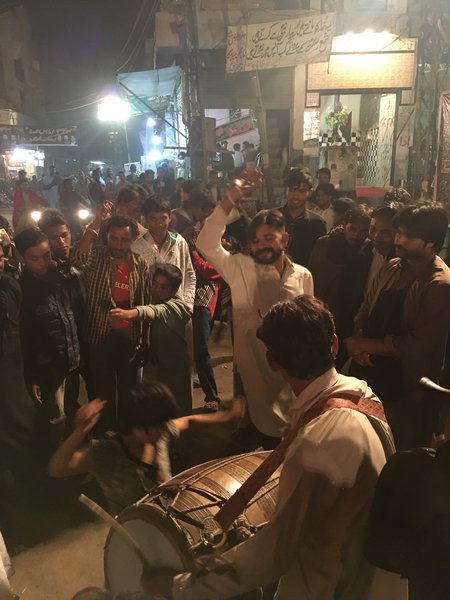
Dhamaal for Data Ganj Bakhsh’s urs in Lahore
Meanwhile, in the streets surrounding Data Darbar, another remembrance was taking place; this one for the martyred grandson of the prophet Muhammad ﷺ. Hazrat Hussain, or Imam Hussain as he is known to the Shia, was brutally murdered in the Iraqi city of Karbala along with at least 72 of his followers in the year 680 AD. (For more on this tragedy, click here). 20th Safar in the Islamic calendar (21st November 2016) marks Chehlum, fortieth day after his martyrdom, a key date in the Shia tradition; the day when a mourning period officially ends.
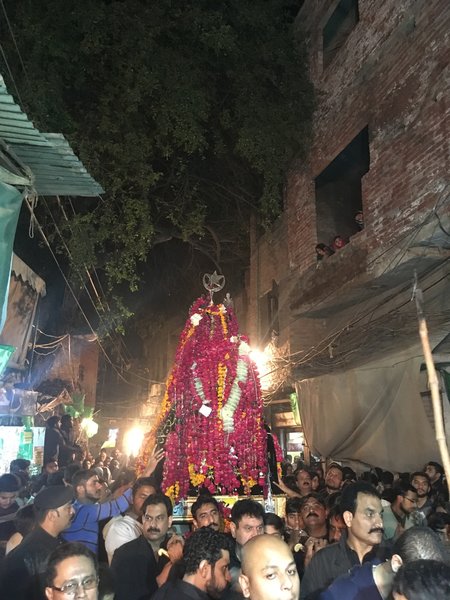
Chehlum procession in Lahore
Through the (other) streets of Lahore, the night before and the day and evening of Chehlum, mourners packed the streets to chant “noha” (mourning songs), cry and beat their chests in grief. Occasionally one of the happy roaming dhamaal groups would happen upon one of the mourning processions, and would stay clear so as not to upset sensitivities. The few people who were completely high with joy (and unaware of what they were walking past) were steered clear by a few guards at each corner.

Chehlum procession in Lahore
The dichotomy between the two processions could not have been greater. The extreme joy of the dhamaal, dancing wildly, completely in love with God, faith and the world, juxtaposed with the extreme grief of the Chehlum mourners, driven to tears and beyond by their love for their Imam. And despite the dichotomy, they are two sides of the one coin that is Lahore. Because while some may identify, and others may reject what they see in these pictures, they both exist because of junoon (passion).
Lahore is dancing, Lahore is love,
Lahore is tears, Lahore is blood…
Lahore is junoon


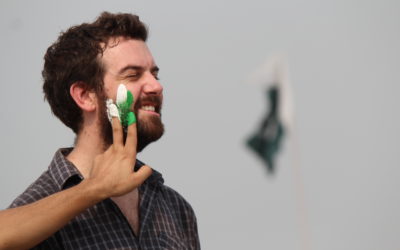


Just reading this post made me feel like I was there witnessing 2 groups celebrating & honouring different things… and when I realised what I was thinking, I tried to find women in the photos…. there were none.
Is it not acceptable for women to be part of such events?
Aww thanks for reading! Yes, women are absolutely there, actually – but usually separate to the men. It’s not socially/religiously acceptable for someone to photograph a non-related woman in Pakistan, so that’s why there are no pics of them. But I assure you – they are there in large numbers!